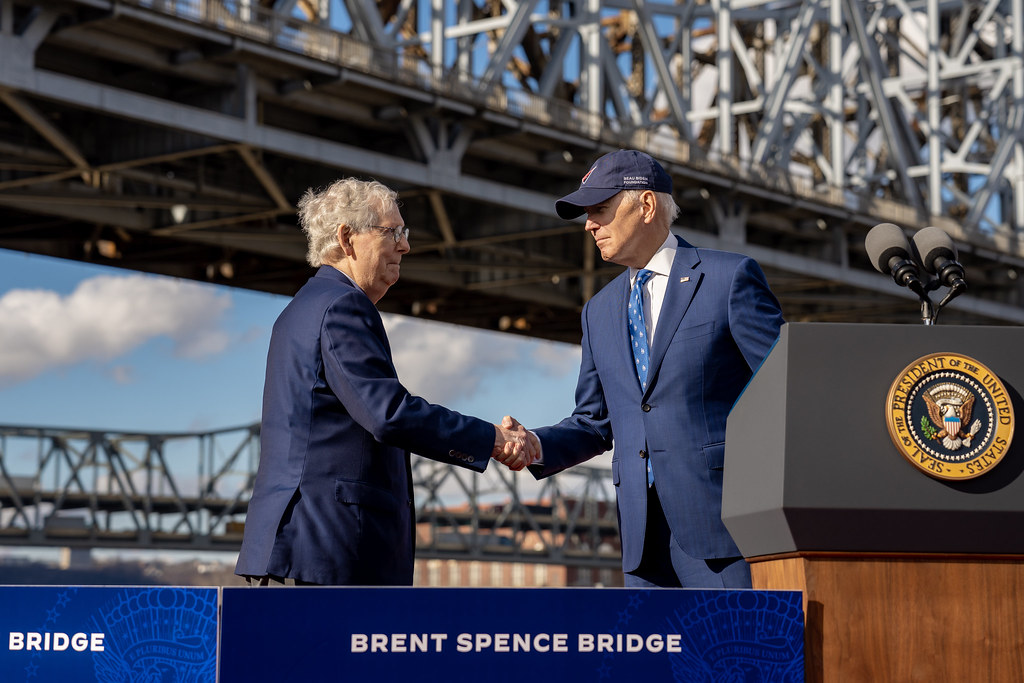
After decades of delay, the United States is finally rebuilding its crumbling roads, bridges, and more. But proper implementation remains the key.
My, how times have changed.
I’m old enough to remember when Infrastructure Week was nothing more than a joke, laughed off as an annual event in which a whole bunch of overpaid consultants came together to advocate for infrastructure investment only for nothing to happen. The hashtag #InfrastructureWeek even became a meme onto itself, symbolizing the ongoing failure to get anything done in Washington.
That is, until Congress actually passed the $1.2 trillion Bipartisan Infrastructure Law in 2021.
Now Infrastructure Week is here again, and this time around, the theme is all about what’s actually getting done — the official hashtag this time around is even #InfrastructureWorks. There are events happening across the country to highlight the impact of the infrastructure legislation, with a big half-day event in D.C. on Tuesday to examine the progress that has been made and what lies ahead.
The Biden administration also is getting involved, using the week to tout the benefits of one of its signature legislative achievements, including via an interactive map that spotlights some of the new law’s signature projects. According to the White House, $220 billion worth of funding from the Bipartisan Infrastructure Law has been announced so far, going to more than 32,000 projects in 4,500 communities nationwide.
Team Biden is also directly connecting that work to manufacturing growth, noting that there have been $470 billion in private sector manufacturing and clean energy investments announced as part of President Biden’s “Investing in America” agenda, which includes the infrastructure law and also other signature legislation like the Inflation Reduction Act and CHIPS and Science Act.
But as tough as it was to get a major infrastructure investment package finally done, it really is only the first step. Now comes the hard part of implementation, including ensuring that all the new infrastructure being built around the country is truly Made in America.
That certainly was the intent of Congress when lawmakers passed the Bipartisan Infrastructure Law. The legislation included critical language known as Build America, Buy America that is designed to ensure that all of the iron, steel and manufactured products used in federally funded infrastructure projects will be American-made. Meanwhile, President Biden has repeatedly made clear that he wants Made in America infrastructure, telling union members just a few weeks ago that “as we rebuild America, we’re going to continue to Buy American.”
The problem comes in when projects actually began to get underway. Sometimes, there isn’t an American-made product available for a project, and Buy America is waived. But the problem is when waivers are overused and abused; Sen. Debbie Stabenow (D-Mich.) conducted a study that found $92 billion in taxpayer funds was spent on foreign contracts between 2008 and 2016 because of Buy America loopholes, for example.
That’s why as all these new infrastructure projects move ahead, it’s vital that the Biden administration do everything to ensure Buy America is properly applied.
We’re doing our part to make sure of that. For example, more than 8,100 Alliance for American Manufacturing supporters have joined us in asking the Department of Transportation to end its 40–year-old general applicability waiver of Buy America for manufactured products. That overly broad waiver that has sent billions of dollars in taxpayer money overseas over the past four decades, and it’s past time for it to end. The deadline to comment on that waiver is May 22, so be sure to tell the agency to close that loophole ASAP.
Infrastructure Week 2023 is a time to celebrate the successes of the past two years, but it is also a reminder that there’s a lot of work ahead to maximize that $1.2 trillion investment. Let’s make sure America’s new infrastructure is Made in America, which will help strengthen and grow American manufacturing and the overall economy for years to come.
